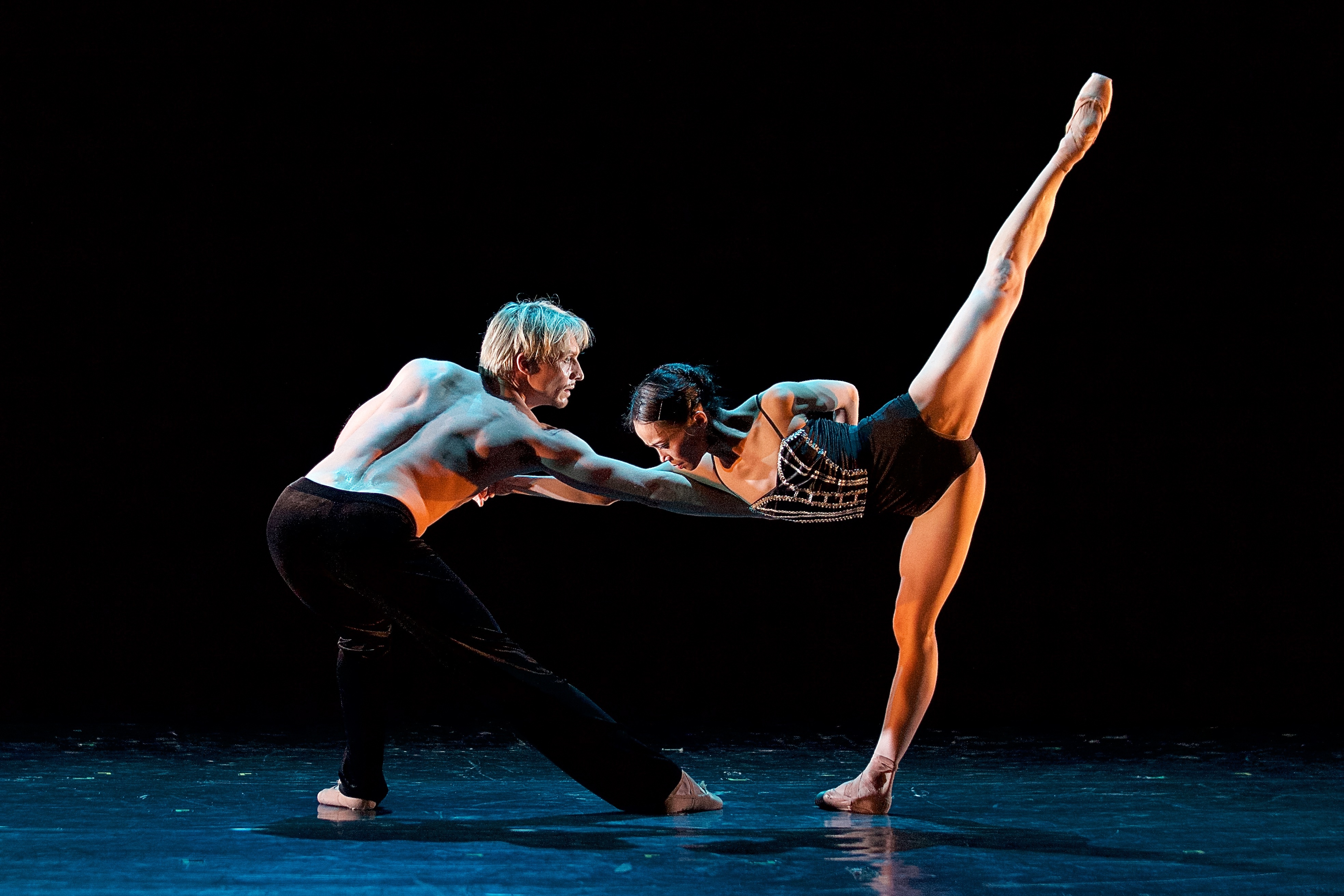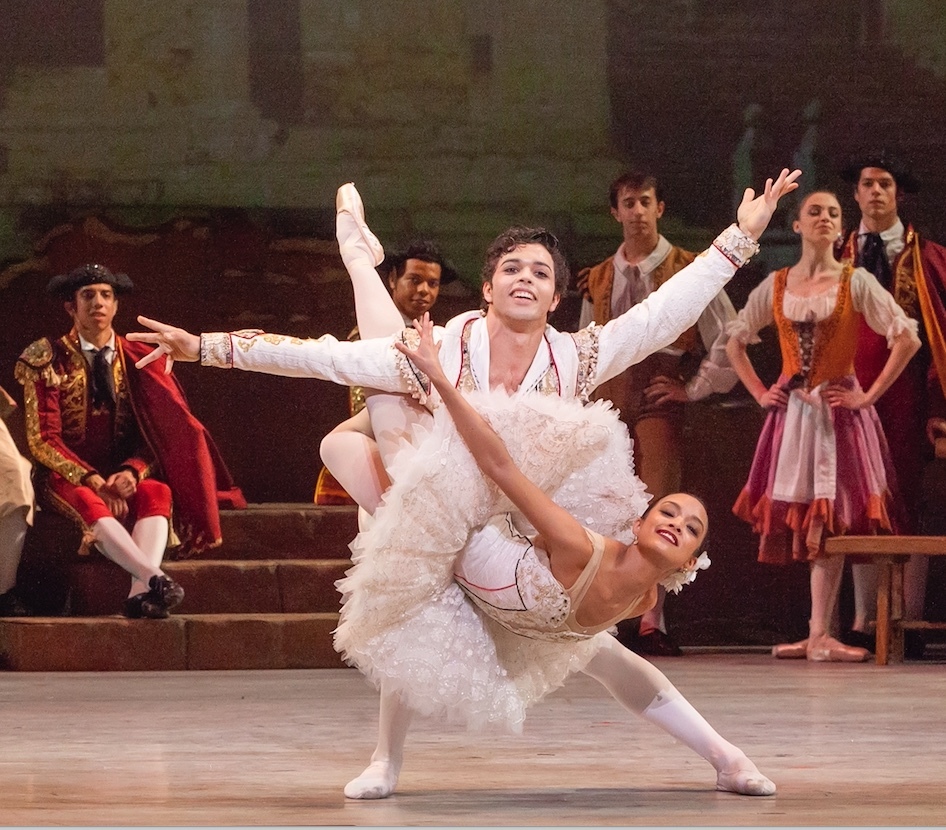Discover What's in Store for Return to Fall
Learn about each of the stunning works that will be featured on our 2018|2019 season opener - Return to Fall, September 14-16, 2018 at Cobb Energy Centre!

Return to a Strange Land (Rückkehr ins Fremde Land)
Premiere: May 17, 1975, at the Grosses Haus, Stuttgart, Germany
Music by Leoš Janáček
Choreography by Jiří Kylián
A visually quiet and heartbreaking ballet, Jiří Kylián's Return to a Strange Land (Rückkehr Ins Fremde Land) was choreographed for the Stuttgart Ballet in 1975 as a tribute to the company’s director, John Cranko (Kylián’s mentor and longtime friend), who died suddenly in 1973. Created as a pas de trois in 1974, it was later extended to its present format for six dancers (two women and four men) forming intimate geometric shapes with light and fluid acrobatic poses. A signature of Kylián’s choreography is its perpetual movement. Kylián uses fast running across open spaces, sudden turns, lifts, falls and graceful contortions of the body to give shape and energy to the ballet’s elegiac theme. While the ballet has no story, it mingles themes of passing and reappearance with death and rebirth. Kyliánsays, “The title Return to a Strange Land conveys the step from one form of existence into another. ... To die is to return into the other land: the strange land of one’s origin.” Return to a Strange Land is a masterly universal expression of longing, loss, dislocation and loneliness.
Tschaikovsky Pas de Deux
Premiere: March 29, 1960, at City Center, New York City
Music by Peter Ilyich Tchaikovsky
Choreography by George Balanchine© The George Balanchine Trust
George Balanchine created the eight-minute Tschaikovsky Pas de Deux in 1960 to showcase the virtuosity of New York City Ballet principal dancers Violette Verdy and Conrad Ludlow. The choreography demands exceptional speed and even more exceptional musical understanding — qualities that are hallmarks of Balanchine’s choreographic ideals. As is typical with Balanchine, the inspiration for his choreography is the music itself. The duet is set to the music of the original pas de deux from the third act of the first Moscow production of Swan Lake in 1877. This extract from the score was thought to be lost but was discovered many years later in the music library of the Bolshoi Theatre in Moscow. Brought to his attention, Balanchine conceived of this brilliant work we know today. Tschaikovsky Pas de Deux follows the structure of a four-part classical pas de deux: The couple performs a slow, sustained adagio together, which is followed by a solo variation for each. Finally, they reunite in a dazzling coda filled with pyrotechnical feats.

Vertigo
Premiere: 2006 in Reggio Emilia, Italy
Music by Dmitri Shostakovich
Choreography by Mauro Bigonzetti
Performed by Guest Artists of the Czech National Ballet
Italian choreographer Mauro Bigonzetti is a distinct contemporary dance figure. His ballet Vertigo, set to music by Dmitri Shostakovich takes form in a highly emotional duet, where dynamic energy and mysterious tenderness unite. In this contemplative meditation on relationships, bodies pull away, then fall back into each other, finding balance out of moments of extreme imbalance. Vertigo is a nuanced, sensual work demanding technical perfection and expressive power. The Czech National Ballet, headed by Artistic Director Filip Barankiewicz, has played a major role in the development of Czech ballet art, owing not only to its statute but also it being the largest dance company in the Czech Republic. Czech National Ballet offers contemporary theatre with a singular artistic flavor drawing upon Prague’s enchanting multicultural milieu.

Don Quixote
Act III – Pas de Deux
Premiere: Dec. 26, 1869, at the Bolshoi Theatre, Moscow
Music by Ludwig Minkus
Choreography by Marius Petipa
On Dec. 14, 1869, Marius Petipa premiered the multi-act story ballet Don Quixote in Moscow, the first of many successful collaborations with Ludwig Minkus, the Bolshoi Theatre’s house composer. In this extracted virtuoso pas de deux from the final act, the lovers Kitri and Basilio are united in a grand spectacle celebrating their wedding. This ballet’s popularity endures as a result of its explosive, fiery mixture of traditional Spanish dance and pure classicism.
Program notes contributed by Nathan Hites, Atlanta Ballet Dance Researcher/Historian.
The Premiere
Premiere: Sept. 14, 2018, at Cobb Energy Performing Arts Centre, Atlanta
Music by Camille Saint-Saëns
Choreography by Ricardo Amarante
(Notes From the Choreographer)
In my first commission for Atlanta Ballet, I invite the audience to experience a day in the life of the dancers as they prepare for opening night. A palpable excitement surges through the studio as new and returning dancers come together in preparation for a fresh start to the season and contemplate the endless possibilities that lie ahead. They are full of energy, fueled by a passion burning deep inside them for an art form to which they have dedicated their whole lives. Repetition, repetition, repetition. The dancers push themselves physically and emotionally as they strive for perfection before the premiere.